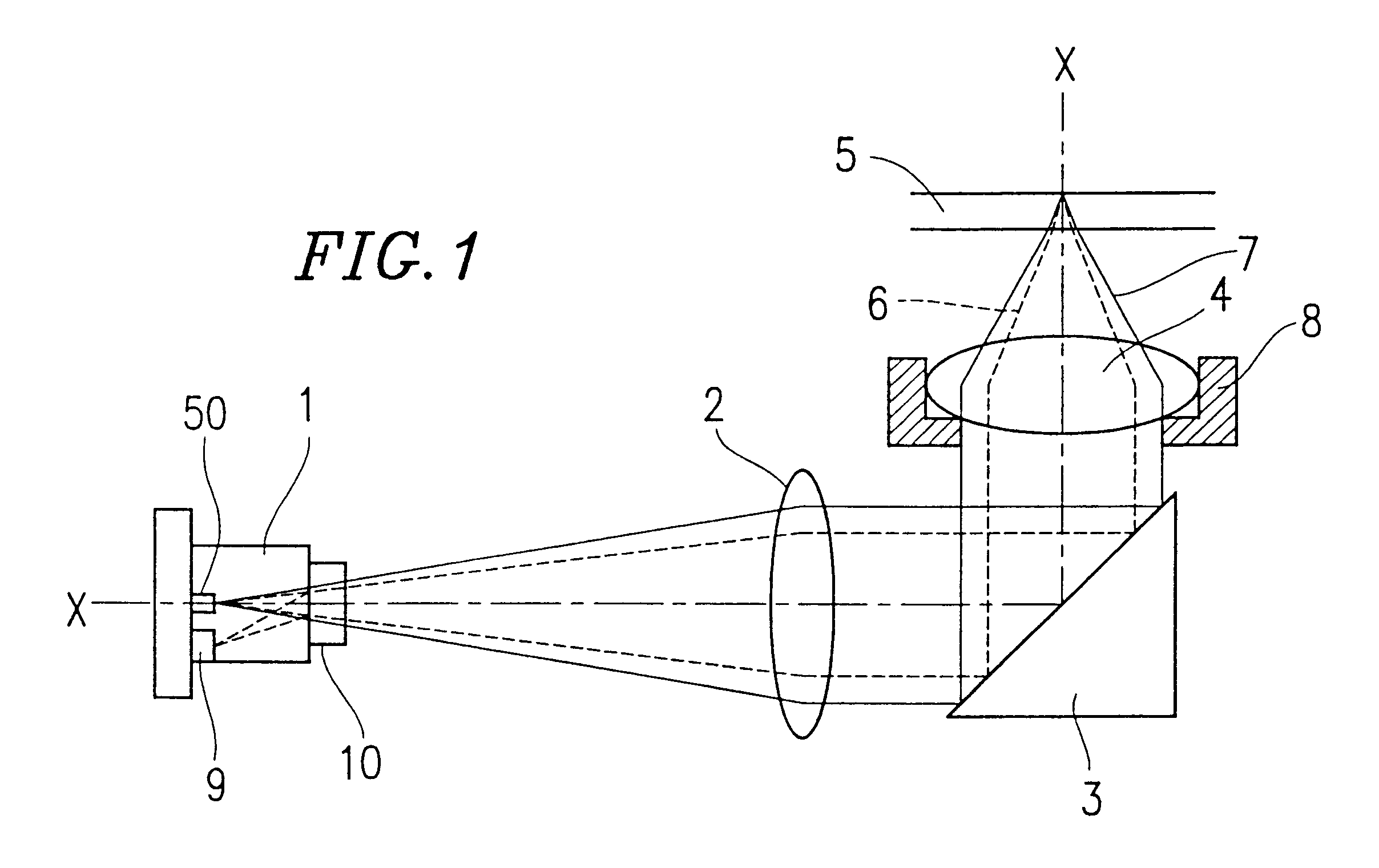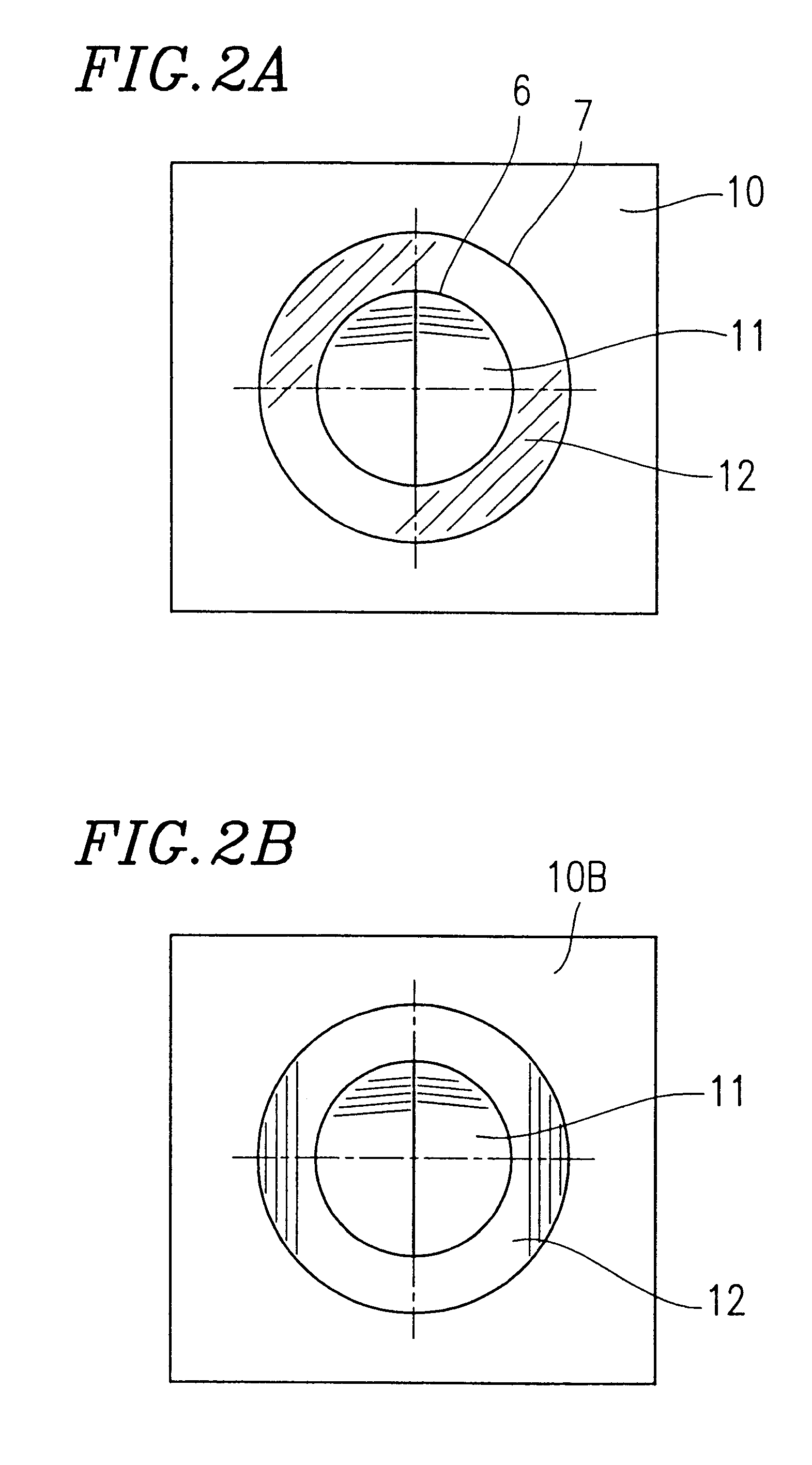Hologram laser unit and optical pickup device including the same
a laser unit and optical pickup technology, applied in the direction of optical beam sources, instruments, disposition/mounting of heads, etc., can solve the problems of increasing the size and manufacturing cost of the device, adversely affecting mass production, and the optical disk is no longer compatible with the optical disk having a substrate of a conventional thickness
- Summary
- Abstract
- Description
- Claims
- Application Information
AI Technical Summary
Benefits of technology
Problems solved by technology
Method used
Image
Examples
example 2
FIG. 4 is a schematic diagram illustrating a configuration of a hologram element 10C which may be incorporated in a hologram laser unit in an optical pickup device according to Example 2 of the present invention. FIG. 5 is a schematic diagram illustrating a functional relationship between the hologram element 10C in FIG. 4 and a photodetector 9B, in a hologram laser unit for use in the optical pickup device of Example 2.
In the photodetector 9B, light receiving elements 14 and 15 are provided for detecting information signals (including servo signals) on an optical disk. A light beam 6, which is a portion of reflected light from the optical disk which is diffracted by a detection hologram 11, enters the light receiving elements 14 and 15. A reproduction signal, a focus servo signal, and a tracking servo signal can be detected, for example, from the sum signal of the signals which are detected by the light receiving elements 14 and 15, the difference signal of the signals which are de...
example 3
An exemplary configuration of an optical pickup device according to Example 3 of the present invention will be described with reference to FIG. 8.
An optical pickup device shown in FIG. 8 includes two hologram laser units 1 and 21 having light sources 50 and 70 of different wavelengths, respectively, and an objective lens 4, and is capable of performing information recording / reproduction for optical disks 5 and 5' having different (i.e., two in the illustrated example) substrate thicknesses. For example, the hologram laser unit 1 can include a light source 50 having a wavelength of 780 nm while the hologram laser unit 21 can include a light source 70 with a wavelength of 650 nm. Furthermore, assuming that the optical disks 5 and 5' to be detected include substrates which are 0.6 mm and 1.2 thick, respectively, the suitable numerical apertures corresponding to the optical disks 5 and 5' are 0.6 and 0.45, respectively.
The configuration shown in FIG. 8 will be explained in more detail.
W...
example 4
Another exemplary configuration of an optical pickup device according to Example 4 of the present invention will be described with reference to FIG. 10. The same components as those in FIG. 8 are indicated by the same reference numerals as those used therein, and the descriptions thereof are omitted.
When a light beam is to be converged on two types of optical disks 5 and 5' having different substrate thicknesses by using a single objective lens 4, spherical aberration may occur depending on the substrate thickness. For example, when an objective lens which is suitable for an optical disk 5 having a 0.6 mm-thick substrate is employed to converge a light beam on an optical disk 5' having a substrate of 1.2 mm thick, a spherical aberration corresponding to the difference between the substrate thicknesses (i.e., 0.6 mm) occurs.
The optimum numerical aperture of the objective lens for the optical disk 5' having a 1.2 thick substrate is as small as 0.45, so that the amount of resulting abe...
PUM
 Login to View More
Login to View More Abstract
Description
Claims
Application Information
 Login to View More
Login to View More - R&D
- Intellectual Property
- Life Sciences
- Materials
- Tech Scout
- Unparalleled Data Quality
- Higher Quality Content
- 60% Fewer Hallucinations
Browse by: Latest US Patents, China's latest patents, Technical Efficacy Thesaurus, Application Domain, Technology Topic, Popular Technical Reports.
© 2025 PatSnap. All rights reserved.Legal|Privacy policy|Modern Slavery Act Transparency Statement|Sitemap|About US| Contact US: help@patsnap.com



